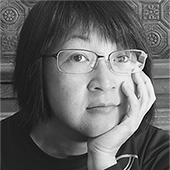Tim Horton spoke to this theme during his closing talk, “The Rise of the Design-Smart City: Emergent Hope in Adelaide’s 5000+,” sharing this quotation:
“The best way to predict the future is to design it.”—Buckminster Fuller
The idea of giving people the right environment to enable them to predict and move beyond current designs is an interesting one. As is moving beyond the idea of user research activities as a milestone in a project plan and advancing toward the important endeavor of having real conversations with the people for whom we design products and services. It was good to see a return to the basic importance of including people in our UX practice rather than getting caught up in a discussion of methodology or approaches and definitions. Perhaps this is a sign of a maturing global practice?
Bill DeRouchey started the conference beautifully, presenting his keynote, “The Power of ‘Why’.” He got us all thinking about the importance of empathy and compassion, while kindly challenging us to look at the bigger systemic problems that designers can help address in our world today.
Jake Causby spoke about “Potholes on the Journey to Design Transparency”—working more effectively with multidisciplinary teams and helping to remove the barriers that may exist between development and design teams. He also touched on the soft skills team members need— independent of their discipline—to work optimally, blending their collective brain power to come up with shared design improvements. Perhaps this is the beginning of a shared creative language that would let us move toward collaborative production?
Jeremy Yuille presented on “Performing Design: Taking the Stage and Acting a Role.” He spoke about the importance of performance in enabling our methods to come alive—a form of flow that moves our ideas forward and helps us to do our best work—and the creative spaces in which we can make this happen.
Stephen Cox spoke about “The Design Anthropologist’s Mindset,”![]() asking deeper questions, making us think about what it means to human. He took us on a lovely whirlwind tour of the history of the world, the use of stories, observation, the language we use, and communication.
asking deeper questions, making us think about what it means to human. He took us on a lovely whirlwind tour of the history of the world, the use of stories, observation, the language we use, and communication.
Note—These represent just a sampling of the many great presentations at UX Australia 2012 that got us thinking about our practice—and what being human is all about.
Reflections in Tangalooma
After UX Australia 2012, a few of us took a weekend trip to Tangalooma, giving us the rare opportunity to share a post-conference experience and a perfect environment in which to experience the joys of being human. We took a ferry ride to Tangalooma, walked on the beach, shared quiet and play times, enjoyed relaxing dinners by the beach, listened to the water, and fed the dolphins, while reflecting on our learnings from the conference. Our weekend discussions sparked some further questions:
- What does being human mean?
- What does it mean as it relates to UX practice?
- Are we truly human in our practice?
- Are there opportunities to improve how we treat people?
- What does this mean for the methods we use?
- Do we design environments that enable people to truly be themselves, so they can do their best work?
- What are the attributes of an environment that fosters deep thinking and helps us to make great leaps in our thinking?
- Are there good examples of businesses treating us as humans?
- What does it feel like when a business truly cares for us?
- Has big business forgotten what it means to treat people as individuals—moving from names to numbers?
- How does being human play into both macro and micro design decisions?
- Do we need to widen our sphere of knowledge into areas where being human is taught rigorously, such as nursing?
- If we don’t need to speak to people outside of our sphere of knowledge, who should we be speaking to and learning from?
Unfortunately, we don’t have the full answers to all of these questions. But we wanted to share these questions with you as a way of broadening the discussion, with the goal of understanding how we can sharpen and blend our methods and approaches to improve our UX practice. However, there are a few thoughts we would like to share—in no particular order.

